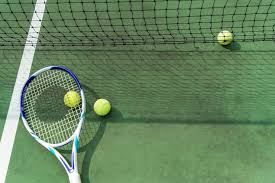
As sports facility standards evolve, Artificial tennis turf has become a game-changing solution for clubs, schools, and recreational sites looking to provide high-performance courts year-round. Compared to traditional clay and natural grass courts, synthetic turf is gaining popularity due to its durability, consistent ball bounce, and minimal maintenance needs. But this shift isn’t only about convenience or appearance, it’s about enhancing playability, ensuring safety, and delivering long-term cost savings for both amateur and professional-level play.
Natural grass and clay courts were once seen as the gold standard for tennis. However, they require intensive maintenance and are heavily influenced by weather and wear. In contrast, such tennis courts provide a stable, playable surface regardless of the climate or time of year, making it a practical and affordable alternative.
Modern synthetic turf systems are engineered to closely replicate the feel of natural surfaces. With multi-layer shock absorption, premium yarns, and infill materials like silica sand, these surfaces deliver reliable grip, movement, and bounce. This allows players to enjoy responsive play that mimics the experience of a grass or clay court — while significantly lowering the risk of slips, falls, and joint injuries.
Whether indoors or outdoors, synthetic courts create a uniform, dependable playing environment that promotes safe and engaging gameplay for players of all levels.
Maintaining a traditional tennis court can be both time-consuming and expensive. Grass courts must be regularly mowed, watered, and treated for pests, while clay courts demand daily rolling, watering, and sweeping. These efforts require significant labor and resources.
Such Artificial Turf eliminates much of this hassle. It requires only occasional brushing, minor infill top-ups, and periodic cleaning to remain match-ready all year round. These simplified upkeep requirements drastically cut operational costs and allow facilities to reallocate resources to other areas.
Moreover, synthetic turf is designed for longevity. With proper care, it can maintain its performance and aesthetic quality for over 10 years. Resistant to UV rays, heavy foot traffic, and extreme weather conditions, it’s an ideal surface for schools, sports academies, and community parks that host a high volume of activities. Custom features like integrated line markings, tailored color schemes, and advanced drainage systems further enhance its versatility.
Today’s artificial surfaces are designed with both performance and player well-being in mind. The consistent ball response supports fairness in competitive matches, while shock-absorbing backings reduce the strain on joints — especially important for older or frequent players.
From an environmental standpoint, synthetic surfaces also offer notable advantages. Unlike natural grass, they don’t require regular watering, chemical fertilization, or pesticide treatments. This leads to reduced water consumption and decreased chemical runoff. Many modern turf systems are manufactured using recyclable materials and installed using sustainable methods, helping facilities meet their green goals.
For municipalities, private institutions, and sports-focused developments aiming to balance performance with sustainability, Artificial tennis turf stands out as a smart, eco-conscious investment.
Once reserved primarily for training facilities, Artificial tennis turf is now favored by clubs, schools, and communities worldwide. Its adaptability makes it suitable for everything from casual weekend matches and professional tournaments to instructional clinics.
The key to unlocking the full benefits of synthetic turf lies in choosing a reliable provider. High-quality installation — from proper sub-base preparation to surface integration — ensures optimal performance, safety, and longevity. Features like drainage, grip, and shock absorption all depend on the quality of materials and workmanship involved.
OSMS Turf offers specialized Artificial tennis turf solutions that meet the highest standards for durability, performance, and style. Whether you’re planning to install a new court or revamp an existing one, their custom-designed systems deliver consistent results with low lifetime costs. Their products support athletes, protect investments, and set the stage for the future of tennis.
artificial turf offers a reliable, eco-friendly, and cost-effective way to elevate tennis facilities for players of all ages and abilities. As more venues make the switch, it’s clear that this modern surface is more than a trend, it’s the new standard for excellence in tennis court design.